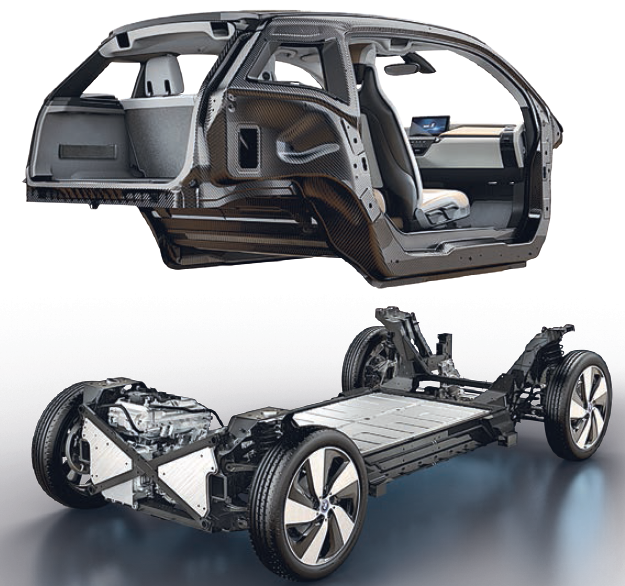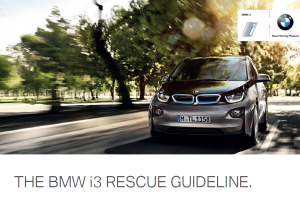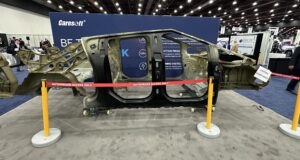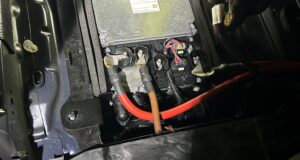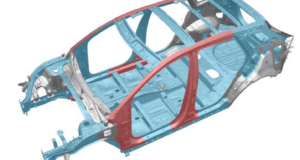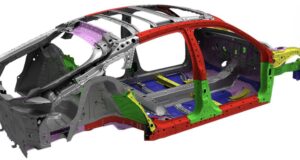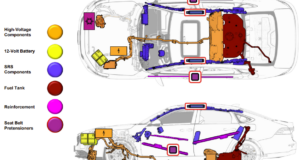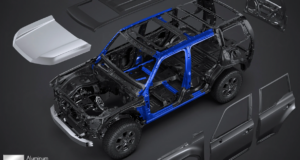Body Structure
The passenger cell of the 2016 BMW i3 is made almost entirely from carbon. The lightweight passenger cell offsets the additional weight of the high-voltage battery.
One different of the BMW i3 is the aluminium Drive module at the front and rear of the vehicle effectively absorbs the energy despite as crumple zones.
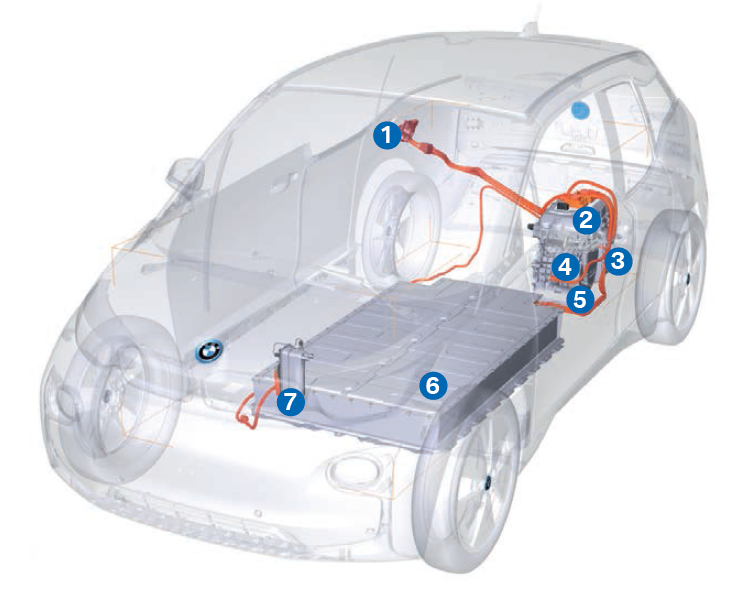
1. Vehicle charging socket at the vehicle.
2. Convenient charging electronics.
3. Electrical machine.
4. Electrical machine electronics.
5. Electrical refrigerant compressor.
6. High-voltage battery unit.
7. Electric heating.
The BMW i3 is fundamentally an ‘intrinsically safe’ high-voltage vehicle. In this case, ‘intrinsically safe’ means that the system switches itself off in the event of a crash with airbag deployment. Simultaneously, the cables outside of the high-voltage battery automatically discharge in just a few seconds. Therefore, by the time you arrive at the scene of the accident, there will no longer be any electrical potential in the orange cables. Additional measures have also been taken. The entire high-voltage system is self-contained.
It is completely isolated and has no conductive connection to the body. Furthermore, all high-voltage components in the vehicle are positioned in such a way that they will only be damaged in the event of an extremely serious accident. Take, for example, the high-voltage battery: this is housed in a sealed compartment in the underbody of the vehicle, which is outside the crash zone for most accidents.
Secure the Ignition
Just like any other vehicle, the ignition/ key fob need to be secured and the vehicle switched off and the transmission placed in “P” Park.
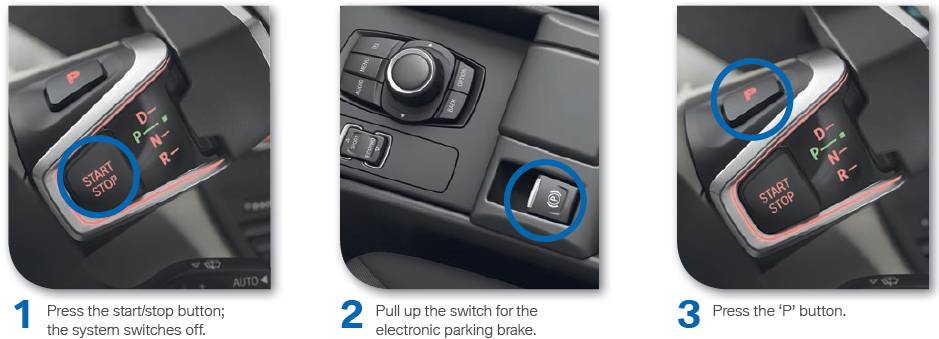
Rescue Guide
Click here to review the complete BMW i3 Rescue Guide.
 Boron Extrication An in-depth look into vehicle extrication and rescues involving today's automobiles
Boron Extrication An in-depth look into vehicle extrication and rescues involving today's automobiles
